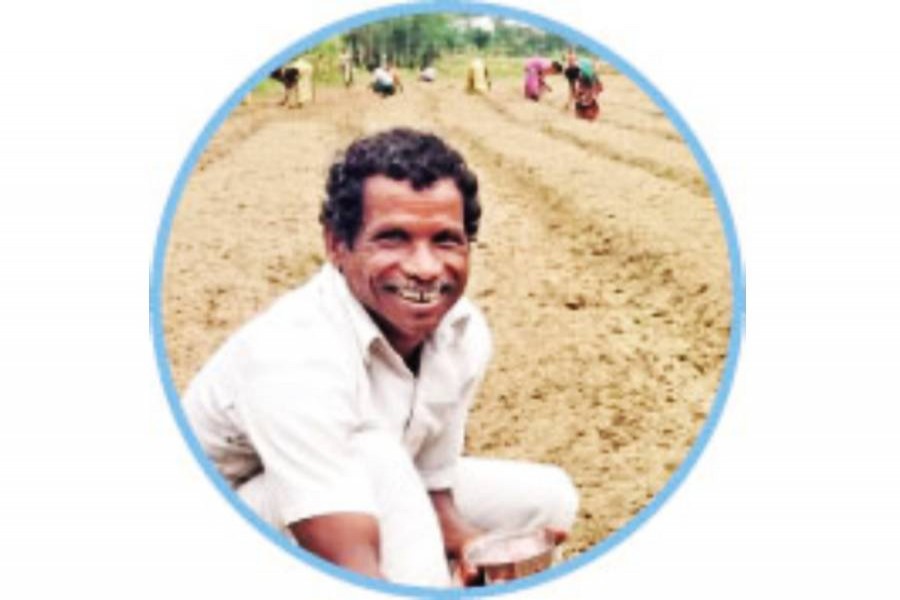Bangladesh has made notable progress in the global hunger index in recent years. It had 'moderate' levels of hunger with a score of 19.6 in 2022. The score was 34.1 in 2000. Despite the country's village people being well-fed than before, the quality of food remains a debatable issue. At this point, the issue of nutritious food items comes to the fore. As different surveys show, the country's rural people are normally little aware of the need for nutritious foods. Outwardly, the sufficiently-fed people living in the villages give the impression that they are satisfied with their food. But the question of nutrients in their major foods, ranging from rice, the staple food item, to various supplements, is a vital one. Does their food include all the nutrients? The villagers themselves are not sure. Most of them have to remain content with vegetables including potatoes, and small fishes eaten with rice.
Solvent villagers can often afford to buy poultry meat and eggs. But to both of the classes, buying milk, fruit, beef and mutton remains a luxury. The irony is, even the vast rural swaths that produce vegetables for the city people cannot supply sufficient vegetables to those living in villages. The reason is the formidable rise in the vegetable prices on occasions.
This is, however, not the general picture of Bangladesh. As has been said in a FE report, changing food habits in parts of the country points to the emergence of an era of consuming nutrition-deficient meals. For example, the opting of the people in the greater northern zone for over-polished rice has not been prompted by choice; they have been compelled to go for this fine rice thanks to its pervasive presence in the market. This rice is marketed by the automated rice millers throughout the country. The processes of repeated polishing leave almost no nutrient in the mills' rice. The poorer segments are forced to consume this placebo-rice as their chief meals. Rice refining or polishing renders the reddish, raw rice cleaned and a little whitish. Lacking dietary knowledge, the village people consume this rice churned out by the mills. Moreover, the traditional rice husking devices have long been consigned to oblivion. As the villagers consume this rice, they develop involuntarily the deficiencies in zinc, vitamin A and other nutrients. At the moment these nutrient deficiencies are widespread in the poor districts in Panchagarh, Nilphamari, Gaibandha, Moulvibazar and Sunamganj. Undernourished and nutrient-deficient children and women in these districts are a common sight in these districts.
Malnourished children and women have once constituted the common view of Bengal or today's Bangladesh. It was considered the age-old scenario. After the emergence of independent Bangladesh, the policy makers in successive governments have been seen turning to the rural Bangladesh, with focus on the people's health needs. In spite of glimpses of success in creating awareness among people about nutrition intake, those finally remained isolated and piecemeal drives. In fact, many rural areas in the country are said to have never heard of the presence of high protein and nutrients in certain foods. The irony is the nutrient-rich foods, like vegetable including potato, are widely available in the villages. The prices of vegetable and other foods, like milk and pulses, have always been affordable to the villagers. Except during natural calamities like floods and drought, village people can lay their hands on them round the year. Unfortunately, they hardly feel the urge to consume them. What it points out is like children, adults are also becoming averse to nutritious foods. And that today's rural people need to be taught what to eat to remain fit and healthy.
Thanks to their being educated and relatively of higher income, the urban people can avail the right organic foods. The villagers are not left in the lurch. They have self-taught elders and the government-run health complex people who can guide them in choosing the perfect edible items. There is a lot to learn from the wise old men living in the villages. Even in these days of broken health and pervasive malnourishment, these people stand out with their sprightly disposition. After their phase is over, there may be none who will come up voluntarily to advise their younger progeny on their perfect eating habits. But the villagers have the right to proper and scientific information about nutrition.
It is also true, the soaring prices of vegetables, eggs, milk, and even fishes, have a role to play in dissuading the rural people from eating these food items. The villagers attach great importance to rice in their normal dish, that too the over-refined whitish one. Lack of dietary knowledge is responsible for this preference for fine rice. In the past, the common villagers' menu would comprise coarse and reddish rice and pulses and occasional fish. For generations they would live on these food items and remain healthy. Eating over-polished rice and high-yield vegetable; eggs and milk once in a blue moon, cannot ensure them a longer life-span and a healthful life. A nation based on its properly healthy people doesn't need much resource. Proper diet conforming to the inherent and intangible power of life provides this elixir of survival. It is unparalleled. A healthy population could be the source of all strength a nation looks forward to. Its bright presence among nations notwithstanding, Bangladesh lags behind others in the area of food and nutrition.
shihabskr@ymail.com


